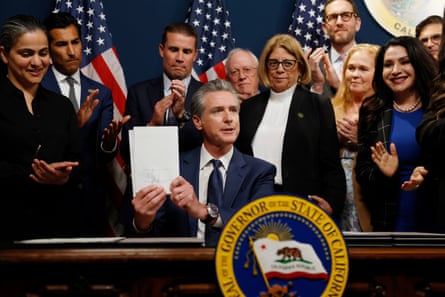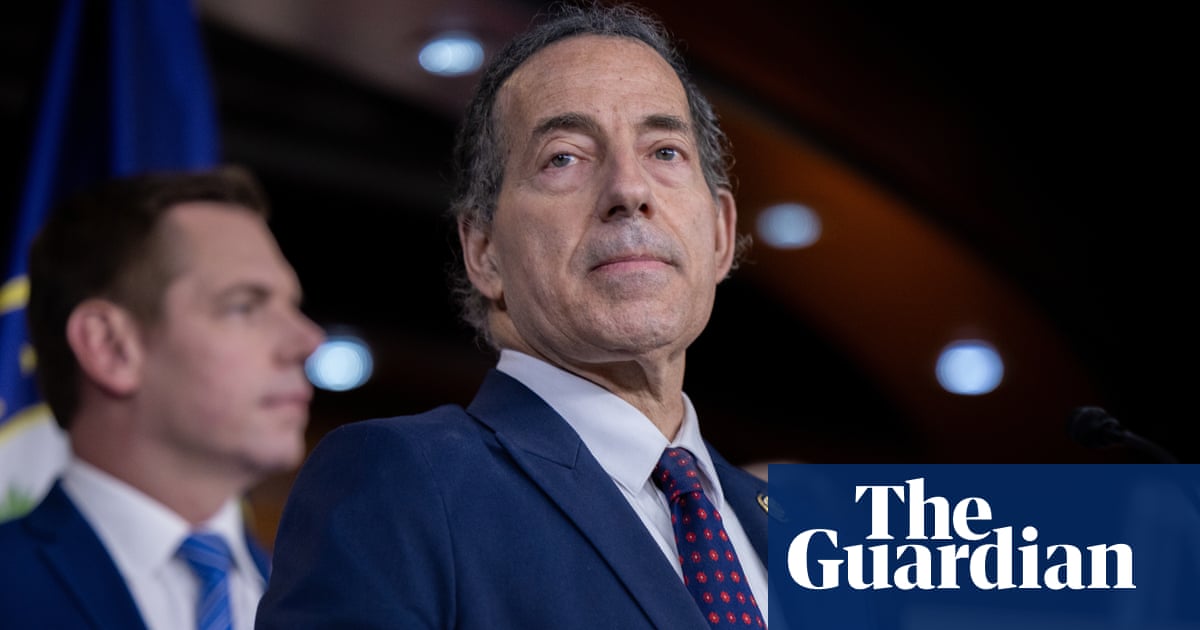Arnold Schwarzenegger brags in his X profile that “I killed the Predator”, but even he was shocked when, as the freshly elected governor of California more than 20 years ago, he saw how unfairly the state’s electoral boundaries were carved up.
One district in the eastern part of the state had such a long, thin middle section it was nicknamed the “swan”. Another was known as the “Jesus district” because you had to walk on water to get from one side to the other. Yet another, in LA’s San Fernando Valley, was memorably described by the Stanford law professor Pam Karlan as “a ghastly-looking, multi-headed, insect-like polygon with 385 sides”.
This was the time-honored dark art of gerrymandering, practiced in state after state by whichever party happened to have a majority in the state legislature and wanted to keep things that way. To Schwarzenegger, though, a political neophyte after his long career as a Hollywood action hero, it looked a lot like election-rigging.
“For a long time I thought that was something that happened way back in the 1800s,” Schwarzenegger said in a 2005 address to the state, “but the practice is still alive and well today.”
What shocked Schwarzenegger was not that Democrats, then as now in control of the state legislature, were stealing seats from Republicans. (Decades earlier, Republicans had done much the same in the opposite direction.) It was, rather, that gerrymandering neutered the power of people’s votes. The year before his speech, in 2004, not a single one of California’s 153 congressional and state legislative seats changed party hands.
“What kind of democracy is that?” he asked.
It was an unusual question for any US politician to ask – most elected officials, of both parties, accepted gerrymandering back then as part of the price of doing business – and it set Schwarzenegger on a reformist path he has never relinquished.
First, he proposed appointing a panel of judges to take over from the state legislature in redrawing district lines. When that was rejected by voters, he advocated instead for an independent redistricting commission, which began redrawing state legislative lines in 2008 and congressional district lines in 2010 – a reform that has proved enduringly popular with voters and has made California one of the most competitive states in the union for seats in the US House of Representatives.
It’s a legacy Schwarzenegger has no intention of relinquishing, not even now that Texas Republicans, acting on the orders of Donald Trump, have redrawn their state maps to add another five Republican-leaning congressional districts, and California’s governor, Gavin Newsom, has vowed to “fight fire with fire” with an initiative to suspend California’s independent commission and add five Democrat-leaning districts in the Golden state.
“I’m not going to go back on my promise,” Schwarzenegger told the New York Times last week. “I’m going to fight for my promise.”
Schwarzenegger, a rare moderate Republican in an increasingly radical party, is an outspoken Trump critic and said he hated what the president had asked the Texas Republicans to do.
But, he said, sinking to the same level in California was no answer, and it made no difference to him that Newsom was pitching his plan as a temporary arrangement. “We are not going to go into a stinking contest with a skunk,” he said. “We are moving forward.”
To underline that he meant business, Schwarzenegger appeared for the interview – and later in a post on X – in a T-shirt that read: “F*** the politicians, terminate gerrymandering.”
Thus the stage is set for a showdown between the current California governor, who will take his emergency redistricting proposal to voters in November, and the formidable former holder of the same office.
Already, Schwarzenegger has started tapping into his old political networks to set up a campaign and fundraising machine to thwart Newsom, and according to his staff he is planning a major policy address – in effect, a campaign launch – sometime in September.
The issue is energizing Republicans across California. Kevin McCarthy, the former House speaker, has ambitions to raise more than $100m to defeat Newsom’s Proposition 50, also known as the Election Rigging Response Act. Charles Munger Jr, the billionaire son of Warren Buffett’s longtime business partner Charles Munger Sr, is reported to have pledged $30m towards the same effort.
The California Young Republican Federation has described Newsom’s initiative as a “dangerous power grab” – echoing almost exactly Democratic rhetoric about the Trump-inspired gerrymander in Texas – and Steve Hilton, the leading Republican candidate running to succeed Newsom next year, is helping to spearhead a legal challenge.
Hilton argues that the independent redistricting commission was already skewed unfairly in favour of the Democrats, since Republicans won a little under 40% of vote in California last November but hold just 17% of the US House seats.
“If we had truly independent districting and fair representation, Republicans would have an extra 12 House seats today,” Hilton says, rounding the number in his party’s favour. (Commissioners would counter that he is overlooking a handful of highly competitive races in Republican-leaning districts that Democrats won by narrow margins.)

The first polls on Newsom’s initiative are inconclusive, with voters seemingly split between liking independently drawn districts and a narrow plurality – especially Democrats – understanding the desire to counter what the Republicans are doing in Texas. Independents and Republicans are far more skeptical, if not outright hostile.
Still, the campaign to stop Newsom will start at an inherent disadvantage, since Democrats have not lost a statewide election since 2006 and California voters, while not as liberal as Republican politicians sometimes like to portray them, have consistently shown a visceral dislike of all things Trump.
Schwarzenegger is likely to be the most powerful weapon in the anti-Newsom arsenal, because he has no fondness for Trump and because his embrace of independently drawn electoral boundaries transcends any partisan allegiance. Since leaving office in 2010 he has campaigned in favour of independent commissions around the country – in states that lean both blue and red – and has spoken outside the supreme court when the justices have considered gerrymandering cases.
He is also likely to serve as a bridge between Republican partisans and civic groups like the League of Women Voters of California, which views Newsom’s initiative as a slippery slope from which there may be no easy recovery.
“Temporary exceptions rarely stay temporary,” the League warned in a statement. “Once you break a safeguard, you don’t just risk one or two or three elections, you set a precedent that future politicians can and will use again … Long-term damage to democratic norms will outlast any short-term gain.”
California’s state legislature voted on Thursday to put Newsom’s initiative on the ballot but, after Texas voted to finalize its own maps, stripped out language that would have automatically abandoned California’s proposed partisan gerrymander if Texas chose to reverse course. Democratic lawmakers argued the escape clause was unnecessary because the Texas legislature had already acted. But scrapping it may also create the perception that Democrats, who enjoy a supermajority in the state legislature, have lost interest in playing fair – exactly the scenario Schwarzenegger warned against back in 2005.
“The system is rigged to benefit the interests of those in office … not the interests of those who put them there,” he said then. “And we must reform it.”

 German (DE)
German (DE)  English (US)
English (US)  Spanish (ES)
Spanish (ES)  French (FR)
French (FR)  Hindi (IN)
Hindi (IN)  Italian (IT)
Italian (IT)  Russian (RU)
Russian (RU)  3 weeks ago
3 weeks ago
























Comments